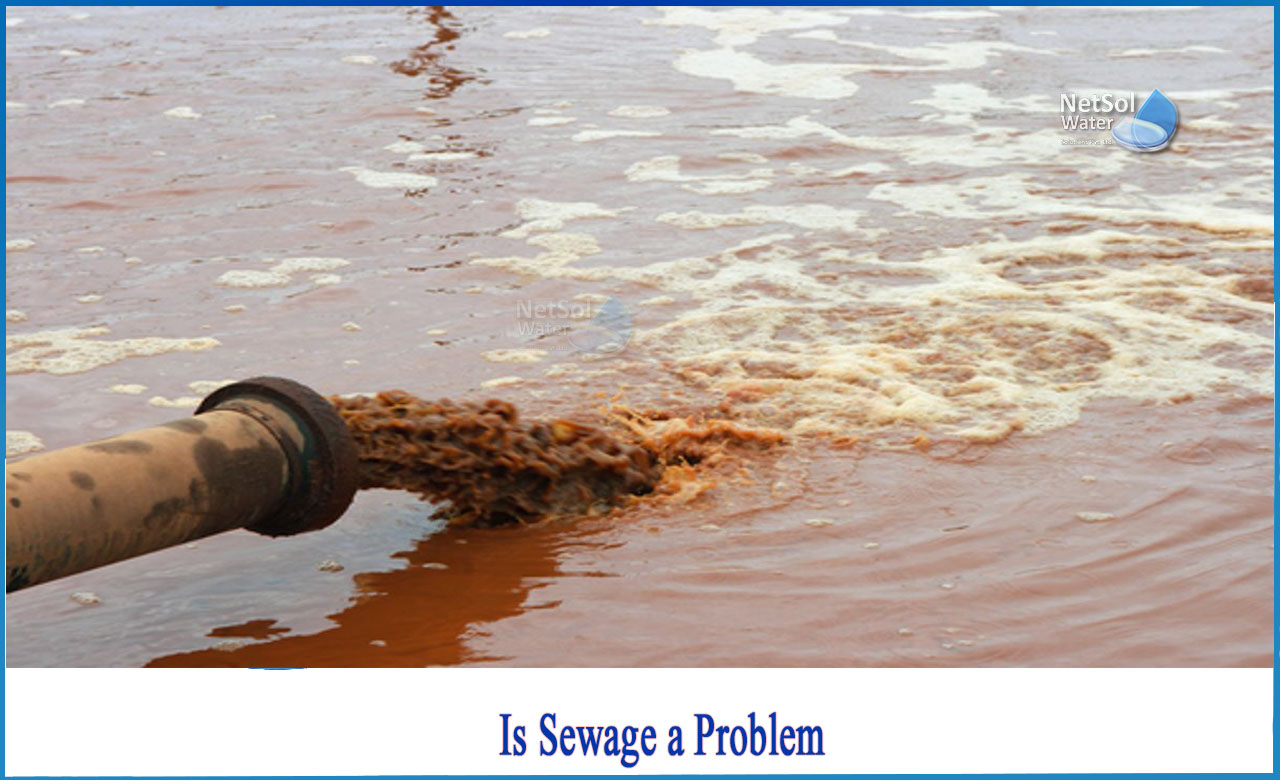Is Sewage a problem?
Raw sewage, sewage sludge, and septic tank waste are all descriptions of sewage. Raw sewage is mostly water that contains excrement, industrial waste, and debris like sanitary towels, condoms, and plastic. Excreta is a major source of pathogenic microorganisms such as bacteria, viruses, and parasites. Sewage treatment reduces the amount of water in the system and removes debris, but it does not kill or remove all microorganisms.
Sewage is a type of water-borne waste that is disposed of in sewers and drains. It's also referred to as domestic or municipal wastewater. Sewage can be harmful for a variety of reasons, including:
1) It includes wastes containing pathogenic microbes and organic matter that can cause a variety of water-borne diseases.
2) Sewage serves as a breeding ground for disease-causing insects and microbes.
3) Sewage is a major source of water pollution.
4) When sewage enters a lake or stream, it demolishes or pollutes the water body, affecting the organisms that live there.
What is a Sewage spill?
Sewage spills happen when wastewater travelling through underground pipes overflows through a manhole, cleanout, or broken pipe. Sewage spills endanger people's health, cause damage to homes and businesses, and endanger the environment, local waterways, and beaches. Failure of a septic system can also lead to sewage exposure. The most common cause of septic system failure is poor homeowner maintenance. If badly maintained systems are not pumped out on a regular basis, sludge (solid material) accumulates inside the septic tank. Sewage then enters the absorption field and clogs it beyond repair. Heavy rains can cause septic fields to become saturated, causing systems to overflow and fail.
How can people be exposed to sewage?
Hand-to-mouth contact during eating, drinking, and smoking, as well as wiping the face with contaminated hands or gloves, exposes people to sewage. Skin contact, cuts, scratches, or penetrating wounds, and discarded hypodermic needles can all lead to exposure. Certain organisms can enter the human body through the surfaces of the eyes, nose, and mouth, as well as through the air we breathe as dust, aerosol, or mist.
How can sewage affect health?
Sewage and wastewater contain bacteria, fungi, parasites, and viruses that can cause infections in the intestine, lungs, and other organs. Bacteria can cause diarrhoea, fever, cramps, and, on rare occasions, vomiting, headache, weakness, or loss of appetite. E. coli, typhoid fever, salmonella, shigellosis, and cholera are among the bacteria and diseases carried by sewage and wastewater. Aspergillus and other fungi commonly grow in compost. These can cause allergic symptoms (such as a runny nose) and, in some cases, lead to lung infection or aggravate asthma. If you have other health issues, you may be more susceptible to getting sick from Aspergillus.
Parasites such as Cryptosporidium and Giardia lamblia can cause diarrhoea, stomach cramps, nausea, and a mild fever.Roundworm causes no symptoms in the majority of people (Ascariasis). Roundworms cause coughing, difficulty breathing, abdominal pain, and blocked intestines. Liver disease is caused by viruses such as Hepatitis A. Feeling tired, having stomach pain, being nauseous, having jaundice (yellow skin), having diarrhoea, or not being hungry are all symptoms of Hepatitis A. According to the Centres for Disease Control and Prevention (CDC), sewage workers are not at a higher risk of contracting Hepatitis A than other workers. If there are a lot of Hepatitis A cases in your neighbourhood, your risk may be higher than usual.
Conclusion
Domestic households, industrial and agricultural practises all generate wastewater, which can pollute many lakes and rivers. Sewage is a term used to describe wastewater that frequently contains faeces, urine, and laundry waste. Because there are billions of people on the planet, treating sewage is a top priority. Sewage disposal is a major issue in developing countries, where many people lack access to sanitary conditions and clean water.
In such areas, untreated sewage water can pollute the environment and cause diseases such as diarrhoea. Sewage in developed countries is quickly and hygienically removed from the home via sewage pipes.
Sewage treatment plants treat sewage, and the waste is frequently dumped into the sea. Sewage is mostly biodegradable, and the majority of it degrades in the environment. When people flush chemical and pharmaceutical substances down the toilet in developed countries, sewage frequently causes problems. When people become ill, sewage frequently introduces harmful viruses and bacteria into the environment, causing health issues.
For more information, contact Netsol Water.




